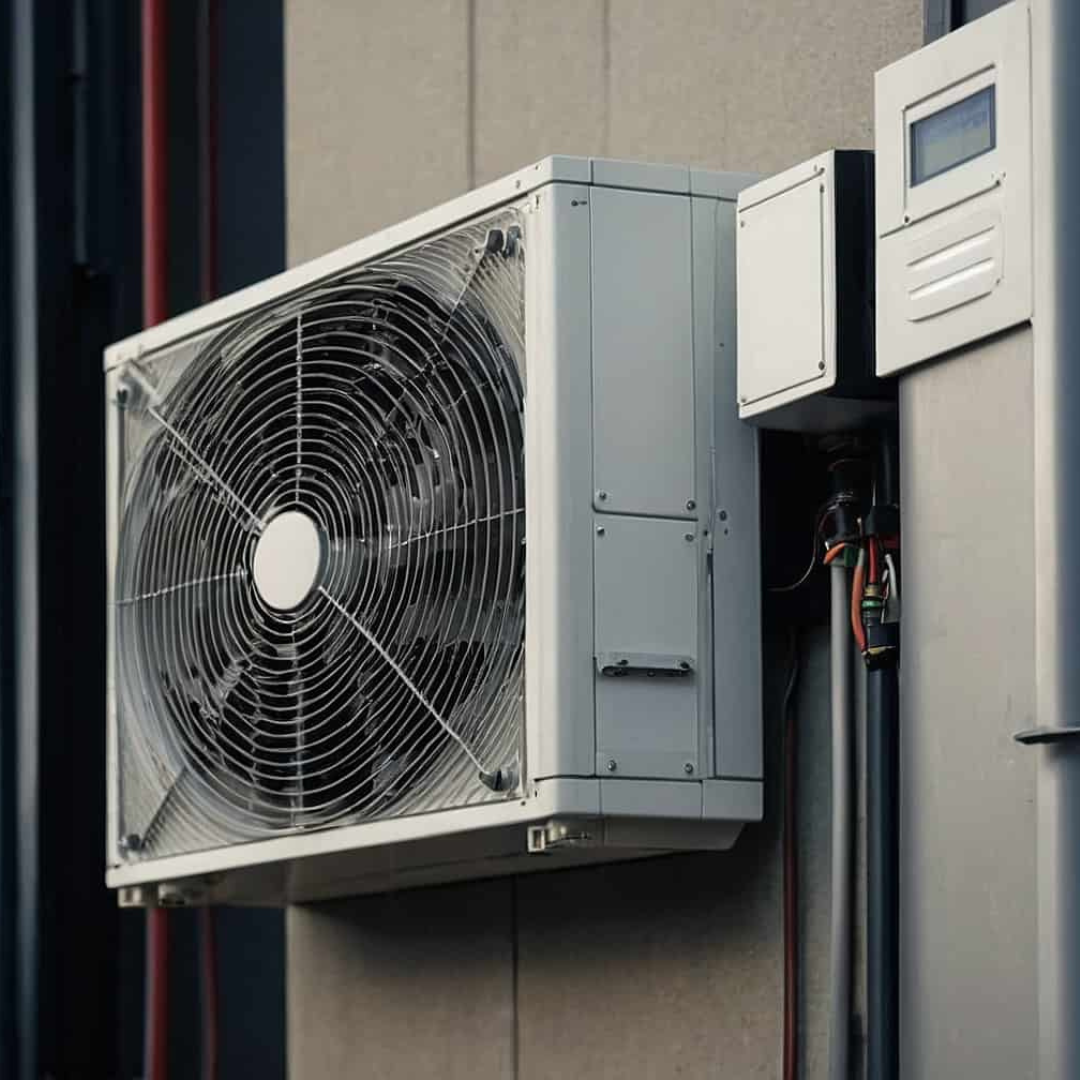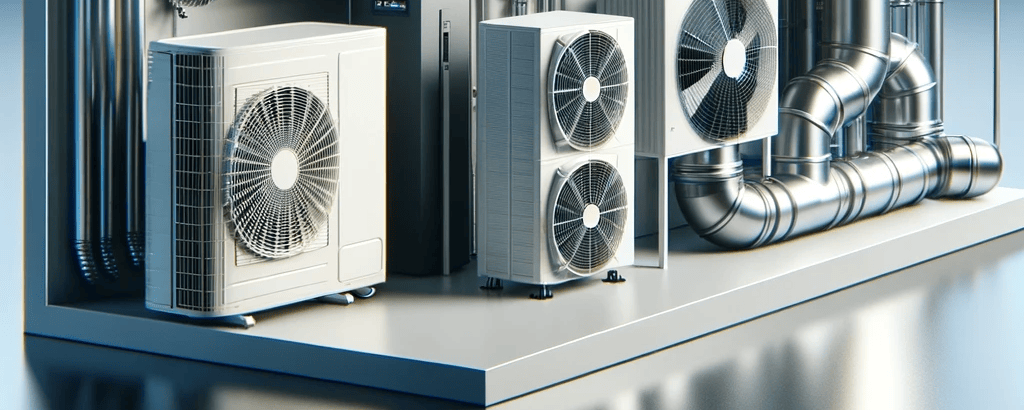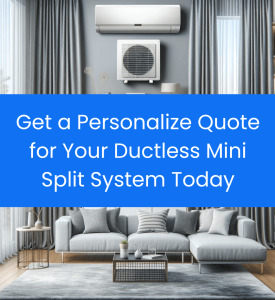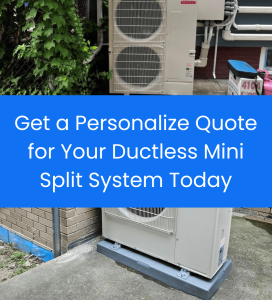The Ultimate Secret to Mastering VRF Systems: A Comprehensive Guide That Will Change the Way You Think About HVAC Forever!
Imagine coming home after a long day at work, only to find certain rooms uncomfortable and stuffy while other areas feel just right. Dealing with hot and cold zones can be frustrating and energy-draining in any building. What if you could customize heating and cooling in specific spaces without impacting others? Enter variable refrigerant flow (VRF) systems!
VRF HVAC technology allows precision temperature control in individual zones simultaneously. This comprehensive guide will explore what VRF systems are, how they work, key benefits, real-world applications, associated costs and considerations, and whether VRF is right for your heating and cooling needs. Let’s unravel the mystery of these state-of-the-art systems!
Table of Contents:

VRF Systems
VRF systems can simultaneously heat or cool multiple zones to customized temperatures using variable refrigerant flow through piping to indoor evaporator units, providing enhanced comfort and efficiency.
What is a VRF System?
A variable refrigerant flow (VRF) system is a highly efficient, customizable heating and air conditioning solution for commercial and residential buildings. Unlike traditional HVAC systems that heat or cool an entire structure using a central unit, VRF systems allow zoned climate control via an outdoor condenser/compressor linked to multiple indoor fan coil units through piping lines.
The table below highlights the differences between traditional and VRF HVAC technology:
| HVAC System Type | Traditional (e.g. RTU) | Variable Refrigerant Flow (VRF) |
|---|---|---|
Heating/Cooling Approach | Whole-building or large zones | Precise zones/rooms simultaneously |
Components | Outdoor unit, indoor AHU/FCU, ductwork | Outdoor unit, indoor evaporators, refrigerant piping |
Efficiency Rating | 14-18 SEER | Up to 30 SEER |
In essence, VRF technology provides flexible, energy-efficient zoning capabilities far superior to traditional unitary systems.
How Does a VRF System Work?
VRF systems can simultaneously heat or cool multiple zones to customized temperatures using variable refrigerant flow through piping to indoor evaporator units, providing enhanced comfort and efficiency. Here are the key components and operation:
Outdoor Unit
The exterior condenser/compressor unit houses the compressor, condenser, expansion valves, and main refrigerant piping connections. Utilizing inverter technology, the variable-capacity compressor modulates refrigerant flow to precisely match each zone's heating/cooling demand.
Indoor Units
Interior evaporative fan coil units come in many forms like wall-mounted units, cassettes, underceiling models, ducted versions, etc. Each connects to the outdoor unit via refrigerant piping through which the vaporized refrigerant absorbs or releases heat.
Refrigerant Piping Network
The piping system links the outdoor unit to multiple indoor units in a branching configuration. Refrigerant flow is modulated via electronic control valves at each indoor unit to independently regulate zone temperatures. During operation, the compressor pumps hot gaseous refrigerant which condenses into liquid form in the outdoor coil, releasing heat outside. This liquid refrigerant then passes through expansion valves and evaporates in the indoor unit coils, absorbing indoor heat. VRF systems can even operate in simultaneous heating and cooling mode across different zones!

Benefits of VRF Systems
Let's explore the many advantages VRF technology offers compared to traditional HVAC systems:
Zoned Comfort Control
VRF allows custom climate control in different areas of a building to maximize comfort, including:
- Private offices, conference rooms, lobbies, etc. in commercial spaces
- Bedrooms, living rooms, studios, etc. in residential buildings
No more hot or stuffy zones due to centralized cooling, or rooms losing heat to other areas!
Energy Efficiency
By utilizing inverter-driven outdoor compressors combined with variable indoor refrigerant flow, VRF systems provide very high energy efficiency. VRF technology offers Seasonal Energy Efficiency Ratio (SEER) ratings over 30, significantly higher than traditional equipment. This equates to substantial long-term energy and cost savings.
Flexibility and Scalability
The modular nature of VRF systems with individual indoor units linked via refrigerant piping makes them highly adaptable, with simple installation, retrofitting, and scalability. Additional indoor evaporators can easily be added to new or renovated zones later on.
Reduced Noise
VRF systems employ the latest compressor sound attenuation advancements as well as variable fan technology, significantly reducing noise levels compared to older HVAC equipment.
Indoor Air Quality
Many modern VRF indoor units also offer advanced air filtration options using high-MERV filters to remove airborne particles, helping improve indoor air quality and health.
Simultaneous Heating and Cooling
Here is an insightful trick only known to HVAC experts. VRF systems can uniquely condition different indoor zones to heating or cooling mode concurrently as needed. For example, server rooms may require year-round cooling, while an adjacent office desires heating in winter – no problem for VRF! This enables further customization and energy savings potential.
As specialists from Richair Comfort Solutions, we frequently highlight this zone control flexibility advantage of VRF to clients wanting advanced heating and cooling.
Applications of VRF Systems
With their combination of precision zoning abilities, efficiency, and scalability, VRF systems suit numerous commercial and residential applications:
Commercial Buildings
- Offices – Individual climate control for private rooms, conference areas, lobbies, etc.
- Hotels – Custom room comfort levels for guests alongside lobby/amenity cooling
- Restaurants – Simultaneous heating and cooling between kitchen and dining zones
- Retail Stores – Separate climate needs for back rooms/warehouses and shopping areas
Residential Buildings
- Apartments/Condominiums – No shared ductwork, enhanced efficiency
- Large Homes – Individually controlled zones for optimal comfort
- Multi-Unit Complexes – Heating or cooling only occupied units saves energy
Institutional Buildings
- Schools – Condition classrooms, gyms, auditoriums, labs independently
- Hospitals – Precise climate control for patient rooms, offices, etc.
- Nursing Homes – Custom comfort for resident bedrooms versus common areas
VRF technology provides tailored heating/cooling zone control unseen in traditional centralized HVAC systems.
VRF System Costs and Considerations
Installing VRF systems demands a higher upfront investment over basic HVAC equipment. However, substantial long-term savings on monthly utility bills offset the initial expenditure over time. And with greater comfort plus advanced functionality/air quality capabilities, VRF systems make a smart investment.
To reap the maximum benefits of VRF technology, work with HVAC specialists for proper system design, professional installation and ongoing maintenance. While quite reliable, VRF systems require trained expertise should rare refrigerant leaks or technical issues occur.
Potential drawbacks to consider include:
- Higher upfront costs
- Specialized skill to install and service
- Possible refrigerant leaks if piping damaged
Conclusion
VRF systems provide superior, customizable heating and cooling capabilities unmatched by traditional HVAC equipment. With outstanding efficiency ratings over 30 SEER via smart inverter technology, VRF enables room-by-room climate control alongside substantial energy and cost savings long-term.
Whether you operate a commercial building like offices or retail, or want advanced functionality in your home, VRF systems maximize comfort while minimizing energy waste. For specialized insight into implementing VRF technology for precise heating/cooling needs, contact the HVAC experts at Richair Comfort Solutions for a consultation today. Our fully-trained team brings decades of VRF and ductless mini-split experience to ensure the ideal system design and installation.
Back Home - Richair Comfort Solution - Ductless Mini Split Systems Top Quality Installations and Professional Service.
Was This Article Helpful?
RECENT POSTS





